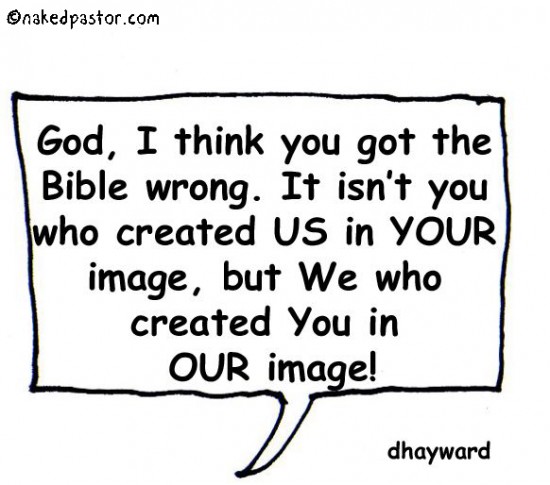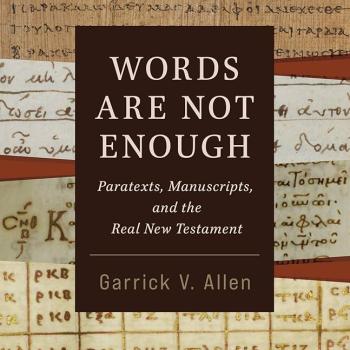David Hayward posted this image on his blog yesterday:

His botching of the title (confusing “who’s” and “whose”) isn’t the only problem.
The statement in the speech bubble is suggesting that we make God in our image, and David’s commentary points out that we are incapable of completely avoiding idolatry. If we think about God, if we speak about God, we commit idolatry, since we make images with our minds and words, and not just with our hands, utilizing wood or stone or metal. The only antidote is to recognize this penchant and not treat our depictions as though they were descriptions.
Yet the person speaking in David’s drawing is still attributing the Bible to God as author. It shows the pitfall that looms for those who know of the danger of idolatry. We may think that, in being wiser about the danger, we can avoid committing it.
It would seem that the best response to this particular issue is a both/and rather than an either/or. Whatever is most transcendent in the cosmos, whatever the reality at its point of origin, we reflect that reality, however dimly and on a smaller scale. And so in formulating our images of God, we are at the same time reflections of that which we seek to grasp with our minds, words, paintings, statues, and whatever else.
And so I think the Biblical tradition gets the balance pretty much right. It depicts us as images of the divine, and makers of images of the divine. And it emphasizes that, just as we are but a small-scale reflection of the transcendent, so any image that we make will be inadequate.












